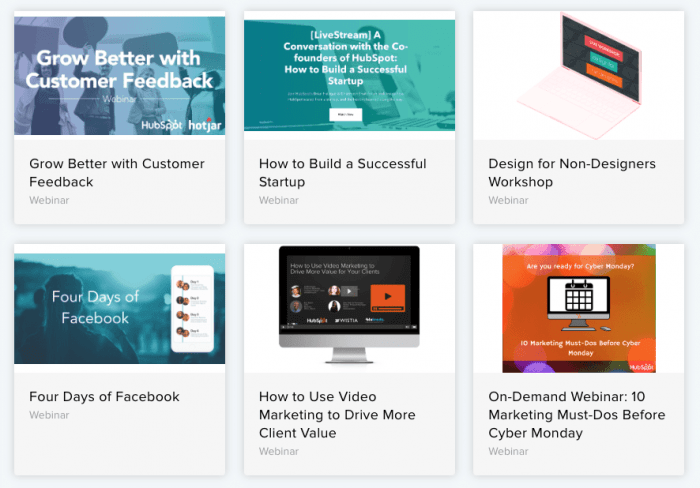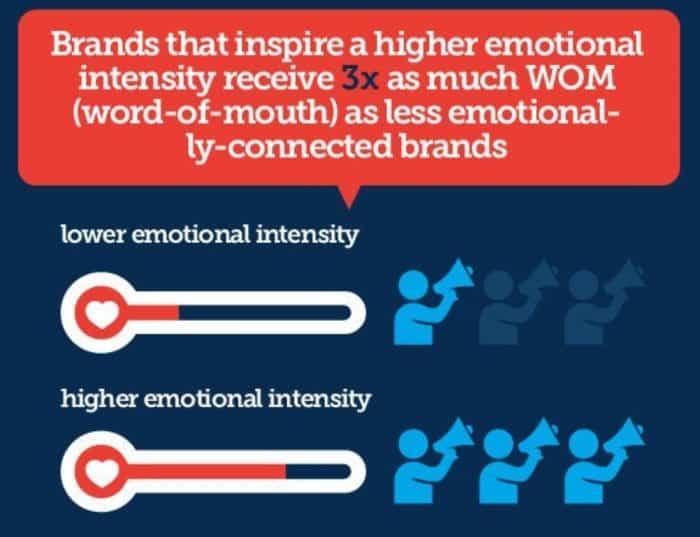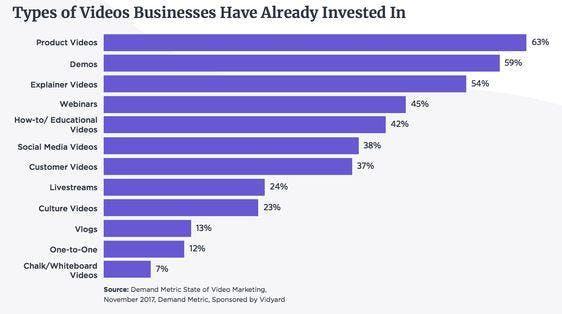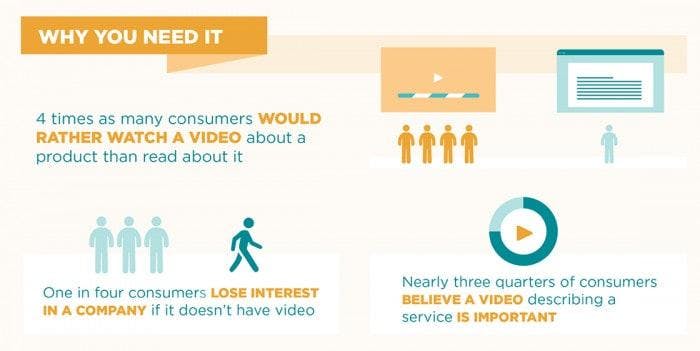Did you know that video content gets 20% more attention and reaches 3 times the amount of people than a standard blog post? Or that online videos will account for more than 80% of all consumer internet traffic in 2020?
There's no denying it, video is powerful.
Still, some types of videos are more engaging than others. That's why I've pulled together a list of the top types of videos every business should create. From live video to how-to and thought leadership, the time is now to jump in and get started!
1. Live video
Live video is one of the easiest to create and one of the most effective ways to reach your audience online. And the data backs this up:
- The online live-streaming industry has grown 99% between April 2019 and April 2020
Live video is a fantastic way to connect with your audience on a more personal and authentic level and to humanize your brand.

Source: Influencer Marketing Hub
Don't be shy to go Live. Share who you are, what you do, and how you help to engage and inspire your audience in real-time. Whether you choose to go Live on Facebook, Instagram, Youtube, or Twitter, there are many ways you can use it.
- Give your followers a behind-the-scenes look at your business
- Show a live event you're attending
- Share your excitement about your new project
- Talk about your latest online course
A great example of live video is Jasmine Star's, "Ask Me Anything" community videos. These are weekly videos that serve several purposes:
- Brings her audience together each week (same day) to create a deeper community bond
- Leverages her expertise and shares it in a more relaxed environment
- Allows her to interact one-on-one with her Facebook fans
The key to making these work in your business is showing up consistently, creating a theme around the topic so they're memorable and valuable to your audience, and then sharing your expertise. All of this makes you accessible, credible and establishes authority.
2. Thought leadership videos
This type of video is perfect for the awareness stage of the customer journey - a time when your audience still doesn't realize that they need your product or service. At this stage, thought leadership videos can help build awareness around your brand and position you as an expert in your field. They’re meant to educate and inspire your audience.
The great thing about thought leadership videos is the many ways you can go about creating them and bringing value: you can share some interesting facts or tips, create a webinar, and a lot more. You can even do an interview with a fellow expert or colleague in your niche, like Jessika Phillips and Mike Gingerich do with NOW Marketing Group.
The possibilities are endless!
When creating thought leadership videos, the most important thing is to start with research and know exactly what your audience needs and what questions they want you to answer. For that, you can look at your analytics. You can also find your most popular content and repurpose it into a video.
3. How-to videos
People love to learn new things, and if you're the one to teach them, they'll appreciate you for it. One of the best things about video is that it can make learning easier, faster, and more fun. Take Katie Lance with Katie Lance Consulting's use of video and how she educates her audience on a major pain point: Facebook engagement.
Think about how you can do the same. What type of educational and how-to videos can you create that will bring real value to your audience and help them solve their daily challenges?
Educational videos are especially helpful during the awareness stage of the customer journey, but they can also start the momentum that will ultimately lead to conversions. In fact, educational or explainer videos can increase conversion by up to 20% or more.
Not only will it help you establish expertise and authority in your niche, but also capture the “how-to” queries in search results.

4. Webinars
Webinars can be a powerful tool at any stage of the customer journey. They can help build awareness around your brand, nurture those relationships, and convert them into sales.
No wonder 78% of buyers say that webinars helped them make B2B purchasing decisions. Another big advantage of webinars is the controlled environment they provide. You can speak directly to your audience, know who's listening, interact directly, and answer audience questions.
Sure, webinars can take time to prepare, but they can also be repurposed later on. You can take a webinar and turn it into a blog post, a lead magnet, or a variety of online assets. And once you build up a series of webinars, adding them to a landing page like Hubspot creates a learning center that your audience can continue to come back to.

5. Brand videos
With so many companies online, it can be difficult to differentiate yourself and get noticed. One of the best ways to stand out is to let the viewer see your company from the inside out: your values, the culture, and everyday life.
People are always more eager to buy from businesses they like and whose culture and values are most similar to their own.
In fact, brands that inspire a higher emotional intensity receive 3 times more word-of-mouth marketing as brands with a weaker emotional connection.

Use the power of video to share your brand's culture and personality with your viewers and to connect on a more personal level.
There are many ways to do this:
- Give a “behind the scenes” look at your office and work process
- Do interviews with employees
- Show some fun moments of company life - parties, birthdays, etc.
- Give a peek at team building days and activities
- Share some bloopers (we all love goofy, off-the-cuff moments)
One of the biggest advantages of video is that you can "show," not tell people your story. Let them hear it, see it, and feel it.
6. Personalized videos
Nowadays, there's a lot of content out there, but most of it is meant to reach and speak to thousands or even millions of viewers.
That's what makes personalized videos that much more special. Not to mention the huge opportunity that they pose. With only 12% of businesses investing in one-to-one video, it could be your best differentiator.

Imagine how you would feel if someone took the time out of their busy day to record a special personalized video just for you. I'd like to think you'd feel pretty special.
Moreover, you’d be much more prone to buy from this person or brand as opposed to one you've had no personal contact with. Your goal is to be that brand. Record short video responses to your customer's questions and comments. Or you use them to thank a customer after they've purchased your product or said something nice about your company.
Your video response doesn't have to be long. Most times, a 30-second video recording is enough to win you a loyal follower and customer for life. If you're a big company, you won't be able to create personalized videos for all customers, but even winning over a few loyal customers a day can make a big difference.
7. Video email
If you have an email marketing funnel in place, videos should be a part of it. Not only are videos easy to create, but they can also make your email conversation seem much more personal. In fact, including video in an email leads to a 200-300% increase in click-through rate.
Your video doesn't have to be professional or extra long - just take a few minutes to record a few valuable tips for your readers and they'll appreciate it.
It's video emails like this that will stand out in a sea of other emails your leads probably receive.

8. Video case studies
Nice words and pretty pictures are great but what people really want is data and proof: proof that your product or service will work and benefit them.
That's where case studies come in. They're a fantastic way to provide valuable data while at the same time driving conversions. Case studies are often the last piece of social proof necessary to "seal the deal" with the customer. That’s why 82% of marketers use case studies as a part of their content marketing strategy and you should too.
But oftentimes, the word case study can conjure up some dry, boring, and uninspired idea of what that video content would look like. That's why this example from Slack, "So yeah, we tried Slack," is so powerful. It showcases how we can tell better stories when we share them through the eyes of our customers.
9. Testimonials
Consumer reviews are generally trusted more than manufacturer descriptions. They're also one of the best ways to provide your audience with the social proof they need to make the final decision.
So, reach out to a few past and current customers who are especially happy with your product or service and ask them to record a short video for you. Most will be honored to help out.
To make it easier for them to create the video and to make sure you get a great testimony, give them a few questions to answer. Questions like:
- What was your main concern when buying the product or service?
- What results did you get?
- What did you like most about the product or service?
- What would you say to potential customers who are still not sure if this is the best option?
Once you've collected a few great video testimonials, you can use them on your website or on a sales page promoting a specific product or service. You can even share them on social media.
The key is to make your potential customers see themselves and their problems in these testimonials. They have to believe that your product can help them like it has helped your customer from the tutorial.
10. Product demo videos
90% of users say that watching a product video helped them make a purchasing decision. That's not surprising: people want to know what it is they're buying before they buy it, and product demonstrations can give them that.
And what better way to demonstrate a product or service than with a video? Especially since 4 times as many customers would prefer to watch a video demonstrating a product than read all about it.

Create video content that shows how your product or service works in practice. Make sure the benefits are clear and the user sees how your product or service can help solve their problem.
You can even position the video as a "how to solve a common problem" and use your product as a solution. Seeing your product or service in practice will help your audience visualize themselves in your place and see how the product can help them.
But remember: the key to producing a successful product and promotional video is to tell a good story and make the value clearly visible. Ironically, the best product videos are not very product-focused.
11. Promotional videos
Educational and engaging videos are fantastic - they help build brand loyalty and authority. But at some point, you have to be ready to take your audience to the next step and guide them into your product or service.
That's where promotional videos come in. Once you've caught your user's attention and built awareness around your brand, it's finally time to turn prospects into real sales. But just because you heard the word promotional, doesn't mean they have to be old-school, in-your-face, hardcore sales videos.
Nope. In today's video age, you can "sell" without feeling or sounding salesy. A great example of this is Creative Entrepreneur and YouTube expert, Roberto Blake.
Roberto has an almost effortless quality about him that's felt and seen in all of his videos. Rather than feeling sold, he seems like a good friend there to guide you on your journey. And that's what promotional videos when done right should be.
To follow in his footsteps, always remember:
- What you're ultimately selling
- What topics feed into that
- What you can talk about to create authority
- What will help people take action and want to work with you
Final thoughts
Video is a powerful tool that can help you build awareness around your brand, nurture relationships, and turn a conversation into conversions. So, how about you? What type of videos will you create?
Which do you find most effective? Let me know in the comments!
About Rebekah Radice
Rebekah Radice, co-founder of BRIL.LA, has traded narcissism for purpose. When not driving growth, you'll find her tricking family into thinking she's Emeril Lagasse - likely covered in marinara. The spotlight was fun, but impact is better. These days she's using 20+ years of brand brilliance for good.
